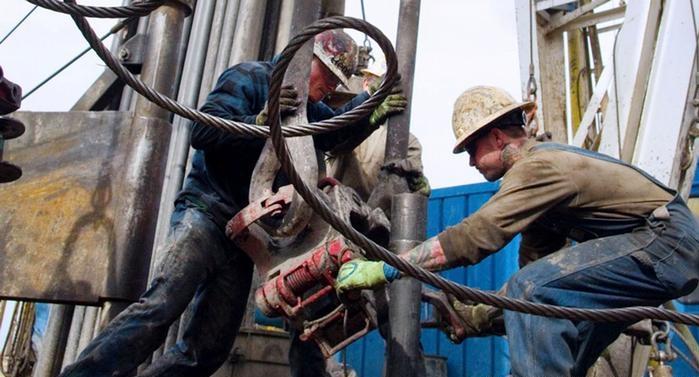
U.S. SHALE DRILLERS UP

REUTERS - U.S. shale drillers are set to ramp up spending on exploration and production next year as recovering oil prices prompt banks to extend credit lines for the first time in two years.
The credit increase is small, but with major oil producers worldwide aiming to hold down production in 2017, U.S.-based shale drillers are looking to boost market share to take advantage of higher prices, and greater availability of capital will make that easier.
North America-focused oil and gas producers are expected to increase capital investments by 30 percent in 2017, according to analysts at Raymond James.
A number of shale producers including Pioneer Natural Resources Co (PXD.N), Diamondback Energy Inc (FANG.O) and RSP Permian Inc (RSPP.N) have forecast bigger budgets and increased output for next year.
Every six months, oil and gas producers negotiate credit with banks based on the value of reserves in the ground. Through the latest round of talks in the fall, 34 companies had their available credit lines raised an average of about 5 percent, or more than $1.3 billion, according to data compiled by Reuters.
The combined bank credit for the companies stood at $30.3 billion, compared with $28.9 billion at the end of spring 2016.
The industry's available credit had been cut by 40 percent over the past three reviews as it contended with a two-year price rout.
"The 'animal spirits,' seem to be coming back to the exploration and production market, albeit slowly," said Reorg Research analyst Kyle Owusu, referring to the human emotion that drives confidence.
Of the 34 companies, 12 saw increases of 5 to 90 percent, while 10 companies had their borrowing bases cut in the latest round, and 12 companies' credit limits were left unchanged.
In addition to the increased borrowing base, lenders have extended maturities on loans.
Oil prices have risen by more than 45 percent this year, increasing the value of oil and gas reserves against which loans are decided. And a number of companies have seen their eligible proved reserves rise, in part due to acquisitions.
Overall U.S. crude oil production is forecast to fall to 8.8 million barrels per day in 2017 from 8.9 million bpd this year, according to the U.S. Energy Department. But shale output could increase from 200,000 to 500,000 bpd in the coming year, analysts said.
Shale companies generally use revolving credit to finance day-to-day operations. But with tight credit over the past two years, they have relied on asset sales and stock issuance to fund routine operations, leaving less money for exploration and production.
With borrowing bases raised, companies do not have to turn to capital markets to finance routine operations.
They are expanding reserves with acreage purchases, particularly in prolific fields such as the Permian Basin in Texas. That in turn helps them negotiate higher borrowing bases with their lenders.
Rice Energy Inc's (RICE.N) borrowing base was increased to $1.45 billion from $1 billion last week after the company added to its reserves through the $2.7 billion purchase of Vantage Energy Inc (VEI.N).
With expanded credit lines, companies can fund acquisitions and new exploration. Diamondback's borrowing base rose to $1 billion from $700 billion. Its Viper Energy Partners LP (VNOM.O) unit had its credit limit boosted to $275 million from $175 million.
"I think we (will) continue to use that borrowing base as a way to fund acquisitions," Kaes Van't Hof, a Diamondback executive, said on a November earnings call.
Some companies are going another route, selling more shares. Carrizo Oil & Gas Inc (CRZO.O) kept its current credit line at $600 million and sold $225 million in stock in October to fund more land purchases.
Other companies are struggling to make up for so-called borrowing base "deficiencies," which arise when their outstanding loans exceed its borrowing base.
After the round of borrowing base redeterminations last spring at least six companies had overdrawn borrowing bases. Four of them have since filed for bankruptcy.
-----
Earlier:





